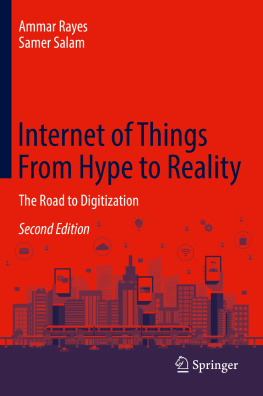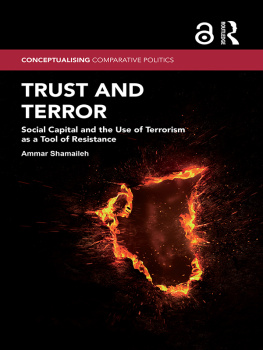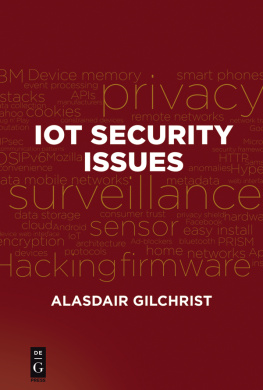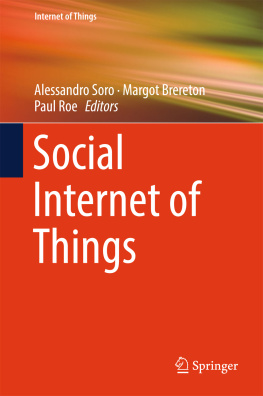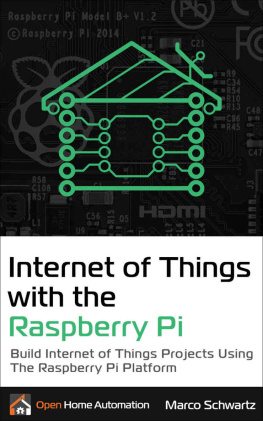Ammar Rayes - Internet of Things From Hype to Reality
Here you can read online Ammar Rayes - Internet of Things From Hype to Reality full text of the book (entire story) in english for free. Download pdf and epub, get meaning, cover and reviews about this ebook. year: 0, publisher: Springer International Publishing, genre: Home and family. Description of the work, (preface) as well as reviews are available. Best literature library LitArk.com created for fans of good reading and offers a wide selection of genres:
Romance novel
Science fiction
Adventure
Detective
Science
History
Home and family
Prose
Art
Politics
Computer
Non-fiction
Religion
Business
Children
Humor
Choose a favorite category and find really read worthwhile books. Enjoy immersion in the world of imagination, feel the emotions of the characters or learn something new for yourself, make an fascinating discovery.
- Book:Internet of Things From Hype to Reality
- Author:
- Publisher:Springer International Publishing
- Genre:
- Year:0
- Rating:4 / 5
- Favourites:Add to favourites
- Your mark:
- 80
- 1
- 2
- 3
- 4
- 5
Internet of Things From Hype to Reality: summary, description and annotation
We offer to read an annotation, description, summary or preface (depends on what the author of the book "Internet of Things From Hype to Reality" wrote himself). If you haven't found the necessary information about the book — write in the comments, we will try to find it.
Internet of Things From Hype to Reality — read online for free the complete book (whole text) full work
Below is the text of the book, divided by pages. System saving the place of the last page read, allows you to conveniently read the book "Internet of Things From Hype to Reality" online for free, without having to search again every time where you left off. Put a bookmark, and you can go to the page where you finished reading at any time.
Font size:
Interval:
Bookmark:
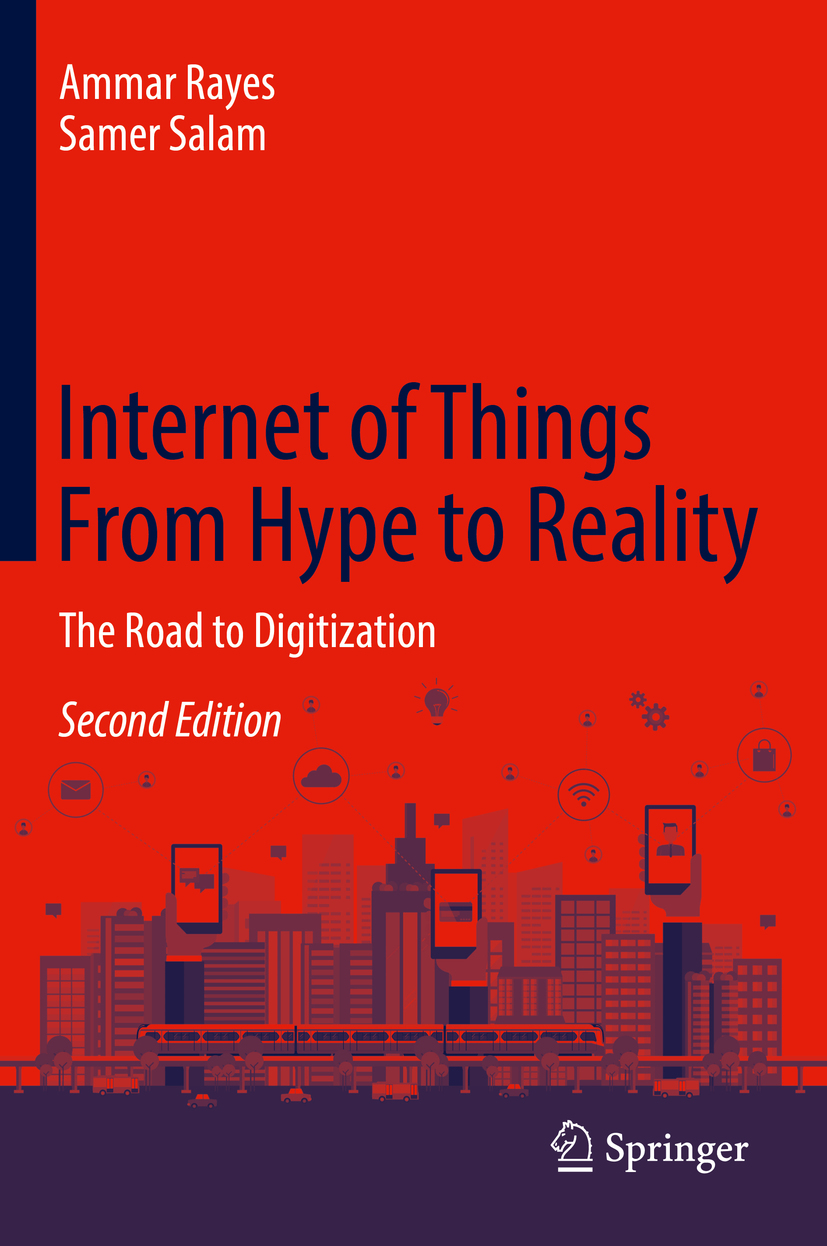

This Springer imprint is published by the registered company Springer Nature Switzerland AG
The registered company address is: Gewerbestrasse 11, 6330 Cham, Switzerland
To invent, you need a good imagination and a pile of junk .
Thomas A. Edison
To invent, you need the Internet, communication, good imagination and a pile of things .
Ammar Rayes
Creativity is just connecting things. When you ask creative people how they did something, they feel a little guilty because they didnt really do it, they just saw something. It seemed obvious to them after a while. Thats because they were able to connect experiences theyve had and synthesize new things .
Steve Jobs
How the Internet of Things will bend and mold the IP hourglass in the decades to come will certainly be fascinating to witness. We, as engineers, developers, researchers, business leaders, consumers and human beings are in the vortex of this transformation .
Samer Salam
In California, just a few months after two people stepped foot on the Moon for the first time, two computers began sending messages to each other using protocols designed to make it easy for other computers to connect and join the party (Leiner et al. 2009). On October 29, 1969, a computer in Leonard Kleinrocks lab at UCLA and a computer in Doug Engelbarts lab at SRI forged the first two nodes in what would become known as the Internet. Vint Cerf and two colleagues coined the term Internet as a shortened version of internetworking in December 1974. It did not take long for more computers and their peripherals, as well as more networks of computers, and even industrial equipment to connect and begin communicating messages, including sharing sensor data and remote control instructions. In early 1982, a soda machine at CMU became arguably the first Internet-connected appliance, announced by a broadly distributed email that shared its instrumented and interconnected story with the world. By 1991, it was clear to Mark Weiser that more and more things would someday have embedded computers, including mobile phones, cars, even door knobs, and someday even clothing (Weiser 1991). Today, spacecraft are Internet-connected devices on missions exploring other planets and heading to deep space beyond our solar system. Courtesy of NASA engineers, some are even sending tweets to millions of followers here on Earth about their progress.
The Internet of Things (also known as the Internet of Everything) continues to grow rapidly today. In fact, the Internet of Things (IoT) forms the basis of what has become known as the Fourth Industrial Revolution and digital transformation of business and society (Lee et al. 2014). The first industrial revolution was the steam engine as the focal machine, the second revolution included the machines of mass production, the third revolution was based on machines with embedded computers, and the fourth revolution (today) interconnected machines and things, including information about the materials and energy usage flowing into and out of a globally interconnected cyberphysical system of systems. The level of instrumentation and interconnection is laying the infrastructure for more intelligence, including cognitive computing to be incorporated.
Why does the IoT continue to grow so rapidly? What are the business and societal drivers of its rapid growth? How does IoT relate to the Internet, what types of things make up the IoT, and what are the fundamental and new protocols being used today? How do the specific layers of the IoT protocol stack related to each other? What is the fog layer? What is the Services Platform layer? How are the security and data privacy challenges being resolved? What are the economic and business consequences of IoT, and what new ecosystems are forming? What are the most important open standards associated with IoT, and how are they evolving?
In this introductory IoT textbook, Dr. Ammar Rayes (Cisco, Distinguished Engineer) and Samer Salam (Cisco, Principal Engineer) guide the reader through answers to the above questions. Faculty will find well-crafted questions and answers at the end of each chapter, suitable for review and in classroom discussion topics. In addition, the material in the book can be used by engineers and technical leaders looking to gain a deep technical understanding of IoT as well as by managers and business leaders looking to gain a competitive edge and understand innovation opportunities for the future. Information systems departments based in schools of management, engineering, or computer science will find the approach used in this textbook suitable as either a primary or secondary source of course material.
In closing, and on a personal note, it has been a pleasure to call Dr. Ammar Rayes a colleague and friend for nearly a decade. He has given generously of his time as founding President of the International Society of Service Innovation Professionals (ISSIP.org), a professional association dedicated to helping multidisciplinary students, faculty, practitioners, policy-makers, and others learn about service innovation methods for business and societal applications. Ammar is one of those rare technical leaders who contributes in business, academics, and professional association contexts. My thanks to Ammar and Samer for this excellent introduction to Internet of Things, as it is one more in a line of their contributions that will help inspire the next generation of innovators to learn, develop professionally, and make their own significant contributions.
J. Lee, H.A. Kao, S. Yang, Service innovation and smart analytics for industry 4.0 and big data environment. Procedia CIRP. , 38 (2014)
Font size:
Interval:
Bookmark:
Similar books «Internet of Things From Hype to Reality»
Look at similar books to Internet of Things From Hype to Reality. We have selected literature similar in name and meaning in the hope of providing readers with more options to find new, interesting, not yet read works.
Discussion, reviews of the book Internet of Things From Hype to Reality and just readers' own opinions. Leave your comments, write what you think about the work, its meaning or the main characters. Specify what exactly you liked and what you didn't like, and why you think so.

